Ответ отрицательный, Но при условии использования правильного метода его можно наносить на многие продукты, как на сковороду с антипригарным покрытием. Тем не менее, современный дизайн (включая текстурированные поверхности и смешанную отделку) и соответствующий контроль температуры/температуры масла могут обеспечить практически антипригарную посуду из нержавеющей стали, сохраняя при этом неизменную долговечность и термостойкость нержавеющей стали.
Теперь пусть Purecook, a профессиональный производитель кухонных принадлежностей из нержавеющей стали, Мы расскажем вам больше практических деталей о том, как добиться качества посуды с антипригарным покрытием из нержавеющей стали.
Характеристики нержавеющей стали и причины пригорания пищи
Нержавеющая сталь (обычно 18/8 или 18/10) высоко ценится за прочность, устойчивость к коррозии и нейтральный вкус. В отличие от посуды с покрытием, нержавеющая сталь не имеет полимерного слоя, отделяющего пищу от металла. Когда белки (мясо, яйца) соприкасаются с высокотемпературными поверхностями из нержавеющей стали, которые недостаточно предварительно нагреты или неправильно смазаны маслом, белки в пище денатурируют и образуют прочные химические связи с металлической поверхностью, что приводит к “прилипанию”. Прилипнет ли пища к кастрюле, зависит от двух факторов:
- Температура поверхности: переохлаждение → связывание белков; перегрев → горение.
- Масляная пленка: Тонкая масляная пленка, нагретая соответствующим образом, образует временный барьер, способствующий отслоению пищи.
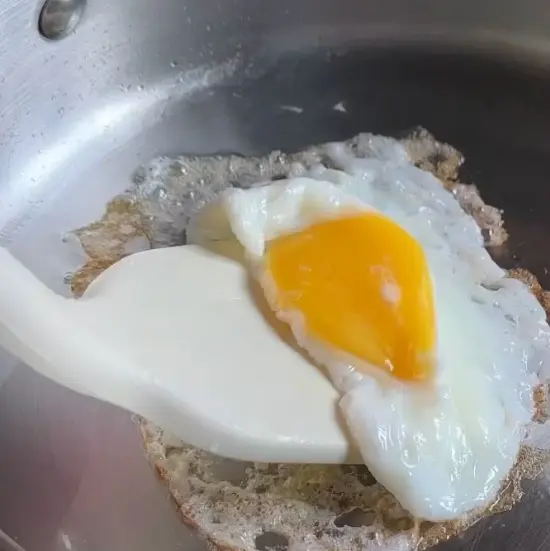
Наука освобождения: Как заставить посуду из нержавеющей стали действовать как антипригарная
Просто следуйте трехступенчатому методу, который обычно используется большинством шеф-поваров, чтобы легко добиться результатов, близких к антипригарным:
- Разогрейте кастрюлю - Нагревайте пустую кастрюлю на среднем огне в течение 1-2 минут. Капните несколько капель воды, чтобы проверить: Если вода скачет и образует бусинки (“танцующая вода”), значит, кастрюля готова.
- Добавьте масло и недолго нагрейте - добавьте небольшое количество масла, чтобы оно слегка светилось (без дыма). Масло заполнит микроскопические поверхностные впадины на поверхности кастрюли, образуя тонкую и равномерную масляную пленку.
- Помещайте продукты комнатной температуры - добавление холодных продуктов снизит температуру поверхности и увеличит липкость; продукты комнатной температуры обладают лучшим эффектом высвобождения.
После тренировки яйца, рыба и курица могут быть очищены от кожуры. Эта технология является основной причиной, по которой некоторые повара предпочитают гибридную посуду с антипригарным покрытием из нержавеющей стали - она сочетает в себе антипригарные свойства и превосходные характеристики нержавеющей стали.
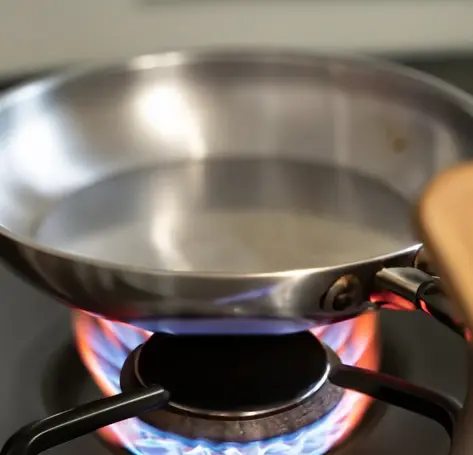
Технология: Варианты с текстурированной и гибридной нержавеющей поверхностью
Чтобы преодолеть разрыв между кастрюлями с нержавеющим и полимерным покрытием, производители разработали два подхода:
- Текстурированные нержавеющие поверхности (микротравление или соты): механическая обработка или лазерное травление создают крошечные углубления, которые удерживают масло, уменьшают площадь контакта и защищают любое покрытие в гибридных конструкциях. Такие сковороды противостоят истиранию и продлевают срок службы покрытия.
- Гибридные сковородыТонкое прочное антипригарное покрытие наносится на углубленные ячейки текстурированной нержавеющей поверхности, так что покрытие защищено рельефными металлическими гребнями. В результате первоначальный отскок получается лучше, чем у голой нержавеющей поверхности, а срок службы увеличивается по сравнению со сковородами с плоским антипригарным покрытием.
Оба подхода направлены на то, чтобы обеспечить внешний вид и способность к обжигу посуды из нержавеющей стали с более легким отсоединением - ключевой момент для поваров, желающих получить лучшее из обоих вариантов.
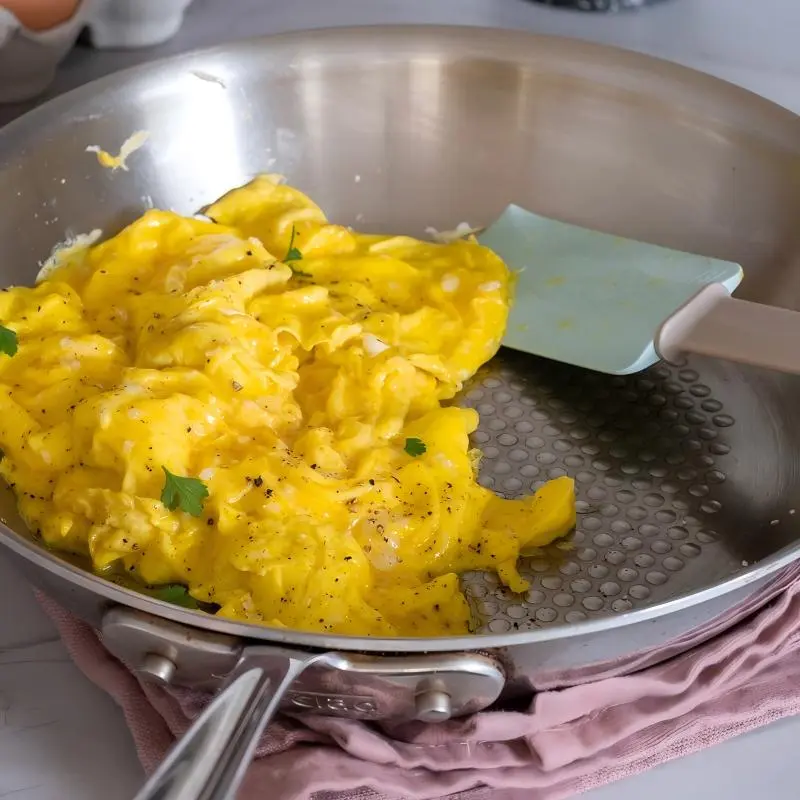
Быстрое сравнение: Нержавеющее и традиционное антипригарное покрытие
| Характеристика | Нержавеющая сталь | Традиционное антипригарное покрытие |
|---|---|---|
| Подрумянивание, деглазирование и долговечность | ✖ Не по умолчанию; требуется техника | ✔ Да, очень легко |
| Высокотемпературное обжаривание | ✔ Превосходно | ✖ Плохое - покрытия могут разрушаться |
| Долговечность | ✔ Очень долговечный | ✖ Срок службы покрытия ограничен |
| Безопасность при высоких температурах | ✔ Стабильный | ✖ Риск разрушения покрытия выше допустимого |
| Техническое обслуживание | Умеренный (умелый) | Легкость (бережный уход) |
| Лучшее для | Яйца, нежная рыба и приготовление блюд с низким содержанием жира | Яйца, нежная рыба, приготовление блюд с низким содержанием жира |
Когда лучше выбрать нержавеющее (или текстурированное гибридное), а не антипригарное покрытие
Выберите нержавеющий (или текстурированный гибрид, продаваемый как Посуда из нержавеющей стали с антипригарным покрытием), если вам это важно:
- Тушение и приготовление соуса - Нержавеющая сталь создает фон для соусов на сковороде.
- Долговечность - Коммерческие кухни и тяжелые пользователи получают преимущества от срока службы.
- Универсальность при высоких температурах - Часто встречаются варианты с возможностью приготовления в духовке и на индукции.
- Безопасность в экстремальных условиях - Нержавеющая сталь не имеет полимерного слоя, способного разрушаться.
Выбирайте традиционное антипригарное покрытие, если оно для вас приоритетно:
- Легкое извлечение яиц и блинов с минимальным количеством масла.
- Легкие сковороды для удобства обращения.
- Не требует особого ухода при ежедневной жарке где обжигание и любовь не являются приоритетными.
Практические советы по поддержанию антипригарных свойств посуды из нержавеющей стали
- Правильный предварительный разогрев - лучшая привычка на все времена.
- Используйте подходящие масла - для большинства целей подходят масла с умеренной температурой дыма (рапсовое, растительное, легкое оливковое).
- Избегайте переполненности - переполненность может снизить температуру поверхности и вызвать образование пара (что приводит к пригоранию).
- Использование соответствующих инструментов - силиконовых, нейлоновых или деревянных - может предотвратить появление царапин, особенно в случае смешанных покрытий.
- Бережная чистка - избегайте использования грубых абразивных средств. Если на кастрюле застряла пища, можно использовать пасту из пищевой соды или кипяток для ее очистки.
- Правильно сушите и храните, чтобы предотвратить появление пятен и сохранить гладкость поверхности.
Следуя этим рекомендациям, вы сможете приблизить характеристики кастрюль из нержавеющей стали к кастрюлям с покрытием, сохранив при этом преимущества металлической структуры.
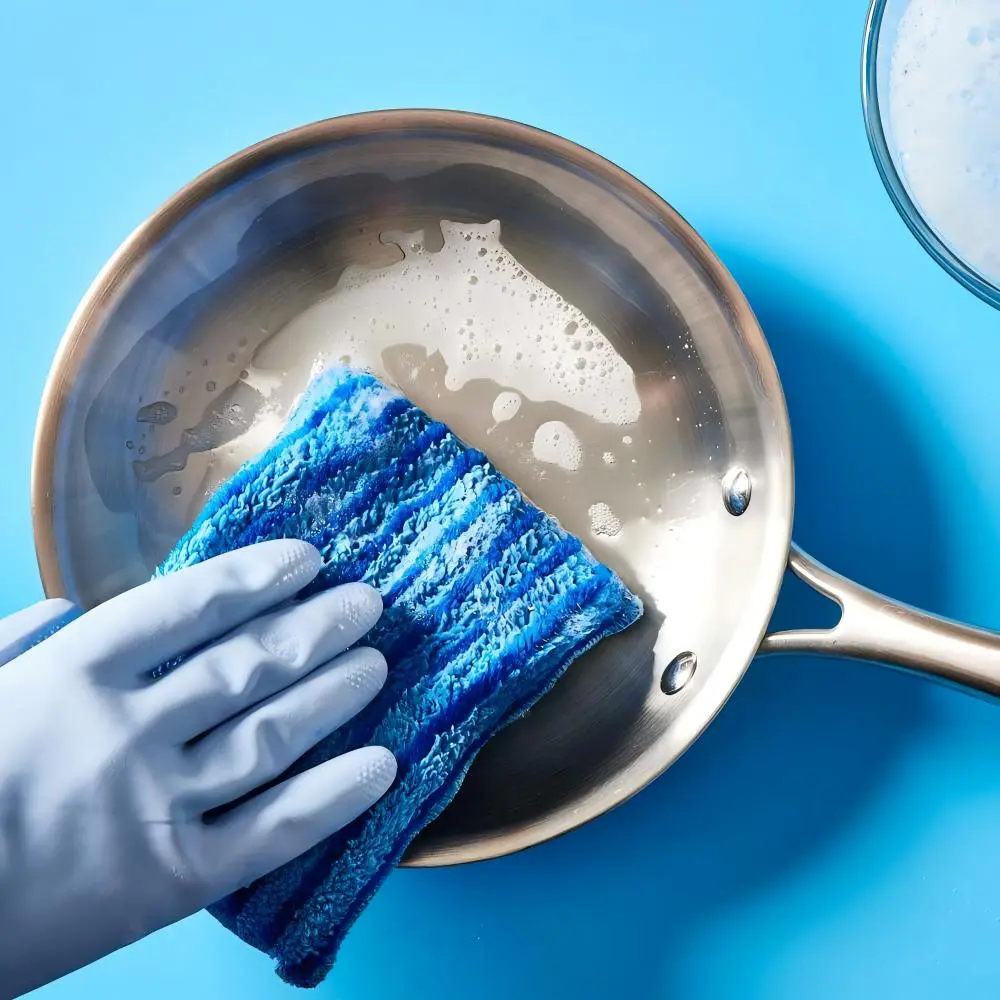
Заключение
Наконец, мы понимаем, что посуда из нержавеющей стали не антипригарное покрытие по умолчанию, Но при правильном нагреве и использовании - или при выборе современных гибридов посуды с антипригарным покрытием из нержавеющей стали - можно добиться аналогичного результата, а также превосходного обжига, долговечности и безопасности.
Имейте это в виду: Если вы хотите, чтобы блюда готовились без усилий и с минимальным количеством техники, то традиционная сковорода с антипригарным покрытием - самый простой выбор. Если вам важны производительность, развитие вкуса и долговечность, купите нержавеющую (или текстурированную гибридную) сковороду и практикуйте метод "разогрев - масло - приготовление".
О компании Purecook
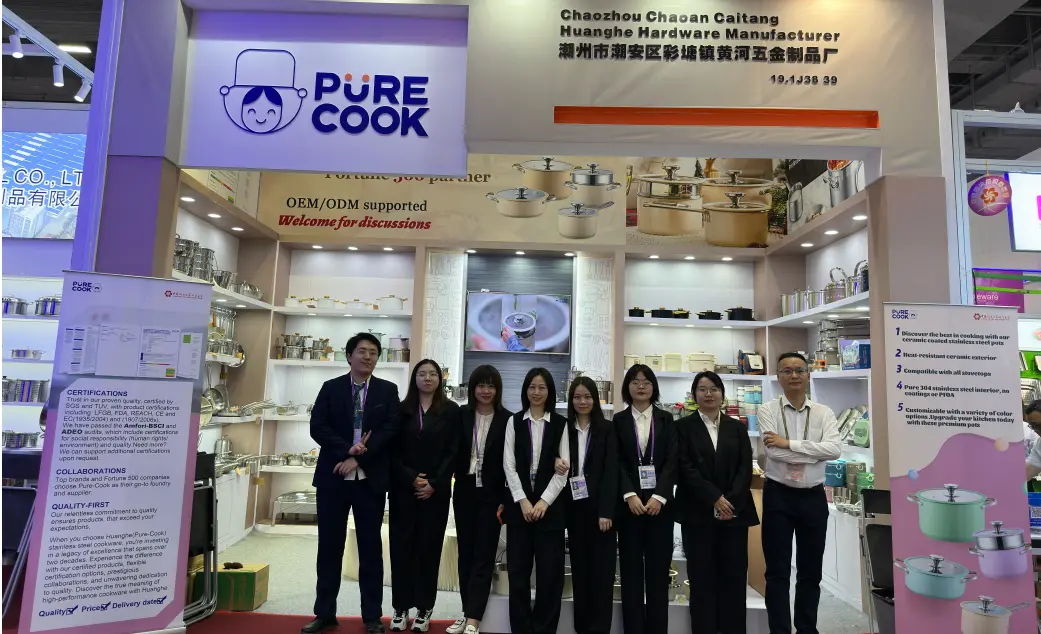
Purecook - это ведущий производитель кухонной утвари из нержавеющей стали предлагает широкий выбор посуды и кухонных принадлежностей, отличающихся производительностью, долговечностью и изысканным дизайном. Благодаря современным производственным мощностям и эффективному управлению рабочим процессом мы поддерживаем высокую производительность, что позволяет с легкостью выполнять крупные и срочные заказы. Purecook всегда поставляет качественную продукцию точно в срок.
Мы не только оптовая торговля кухонной утварью из нержавеющей стали, Но мы также можем предложить Посуда из нержавеющей стали на заказ которые предназначены для поддержки глобальных оптовиков, розничных торговцев и брендов, ценящих надежность и скорость.
FAQ - распространенные мифы о посуде с антипригарным покрытием из нержавеющей стали
Q1: Всегда ли посуда из нержавеющей стали пригорает?
A1: Нет, при правильном использовании - надлежащий предварительный нагрев и смазка. Посуда из нержавеющей стали с антипригарным покрытием Почти без прилипания.
Вопрос 2: Является ли текстурированная посуда из нержавеющей стали неразрушимой?
A2: Не совсем. Хотя ячеистые или текстурированные поверхности предназначены для защиты от царапин от металлических инструментов, все же следует избегать чрезмерной остроты или неправильного использования металлических инструментов.
Q3: Требуют ли кастрюли из нержавеющей стали специального ухода для коммерческого использования?
A3: Просто регулярная чистка и обработка. Избегайте агрессивных абразивов, чтобы сохранить гладкость и блеск поверхности.
Q4: Можно ли готовить яйца на нержавеющей стали?
A4: Да. При правильном нагреве и небольшом количестве масла, Посуда из нержавеющей стали с антипригарным покрытием Отлично справляется с яйцами.
Q5: Является ли посуда из нержавеющей стали более полезной, чем сковородки с антипригарным покрытием?
A5: Да. Она не содержит химических покрытий и безопасна для приготовления пищи на высоких температурах, идеально подходит как для домашней, так и для профессиональной кухни. Современная посуда с покрытием (например, новая керамика) обычно безопасна.
